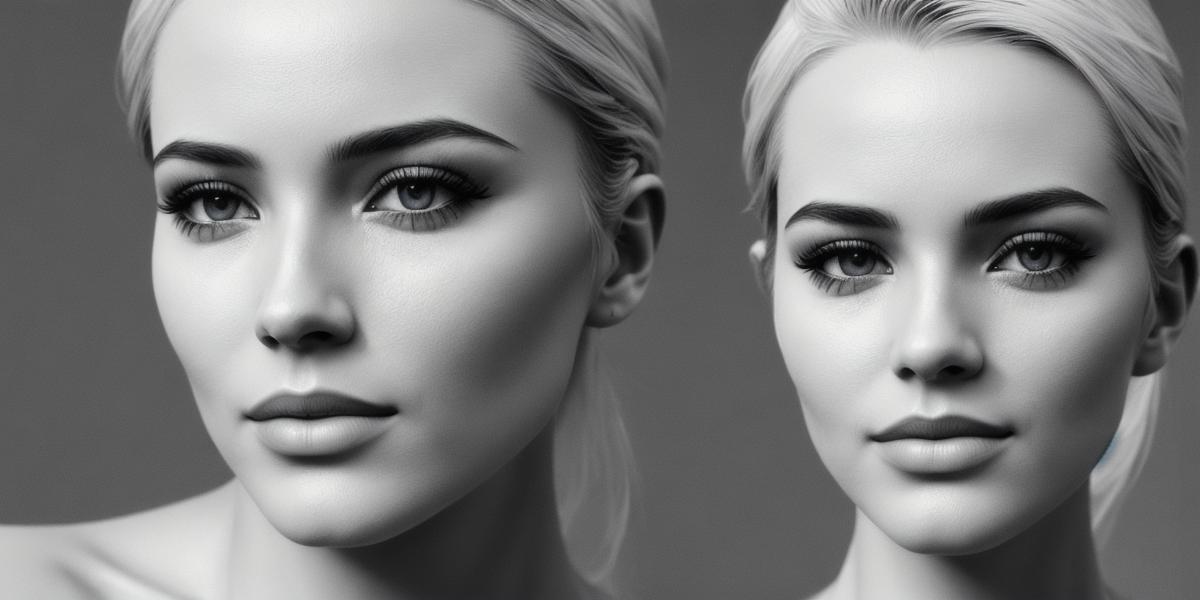As the world advances towards a more digital era, the demand for 3D models has been on the rise. However, creating these models from scratch can be time-consuming and expensive. This is where AI-generated 3D human models come into play. In this article, we will explore how AI is revolutionizing the future of design by providing us with highly realistic and efficient 3D human models.
Introduction
Let’s first understand what 3D human models are. These are virtual representations of people that can be used in a wide range of applications such as video games, movies, advertising, fashion, architecture, and more. However, creating these models manually is a tedious process that requires specialized skills and a lot of time.
Enter AI-generated 3D human models. With the help of advanced algorithms, these models can be created in a matter of seconds or minutes, without any prior knowledge of 3D modeling software. This makes it possible for anyone to create highly realistic and customizable 3D human models.
Benefits of AI-Generated 3D Human Models
- Efficiency: With AI-generated 3D human models, designers can create multiple models in a matter of seconds or minutes. This saves a lot of time and effort that would have been required to create these models manually.
- Realism: The use of advanced algorithms ensures that the AI-generated models are highly realistic, with accurate body proportions, facial expressions, and textures.
- Customization: These models can be customized according to the designer’s requirements, making it possible to create unique and personalized 3D human models for specific applications.
- Cost-effective: AI-generated 3D human models are a cost-effective solution for businesses that require multiple models for different applications.
Case Study: Nike’s Virtual Try-On Feature
Nike is one of the companies that have successfully integrated AI-generated 3D human models into their products. Their virtual try-on feature allows customers to see how their shoes will fit and look on their feet before making a purchase. This has not only improved customer satisfaction but has also increased sales for Nike.
How AI-Generated 3D Human Models Work
The process of creating AI-generated 3D human models involves the use of advanced algorithms that analyze data from various sources, such as images and videos of real people. This data is then used to create a virtual representation of the person that closely resembles their physical appearance.
The algorithm takes into account factors such as body proportions, facial expressions, and textures to ensure that the model is highly realistic. Once the model is created, it can be customized according to the designer’s requirements, making it possible to create unique and personalized 3D human models for specific applications.
FAQs
- How accurate are AI-generated 3D human models?
AI-generated 3D human models are highly accurate, with advanced algorithms that analyze data from various sources to ensure that the model closely resembles the person’s physical appearance.
- Can AI-generated 3D human models be customized?
Yes, AI-generated 3D human models can be customized according to the designer’s requirements, making it possible to create unique and personalized 3D human models for specific applications.
Summary
AI-generated 3D human models are revolutionizing the future of design by providing designers with highly realistic and efficient models that can be created in a matter of seconds or minutes. With the use of advanced algorithms, these models are highly accurate and can be customized according to the designer’s requirements. This makes it possible for businesses to create multiple models for different applications at a cost-effective solution. As we move towards a more digital era, AI-generated 3D human models will continue to play a crucial role in shaping the future of design.
